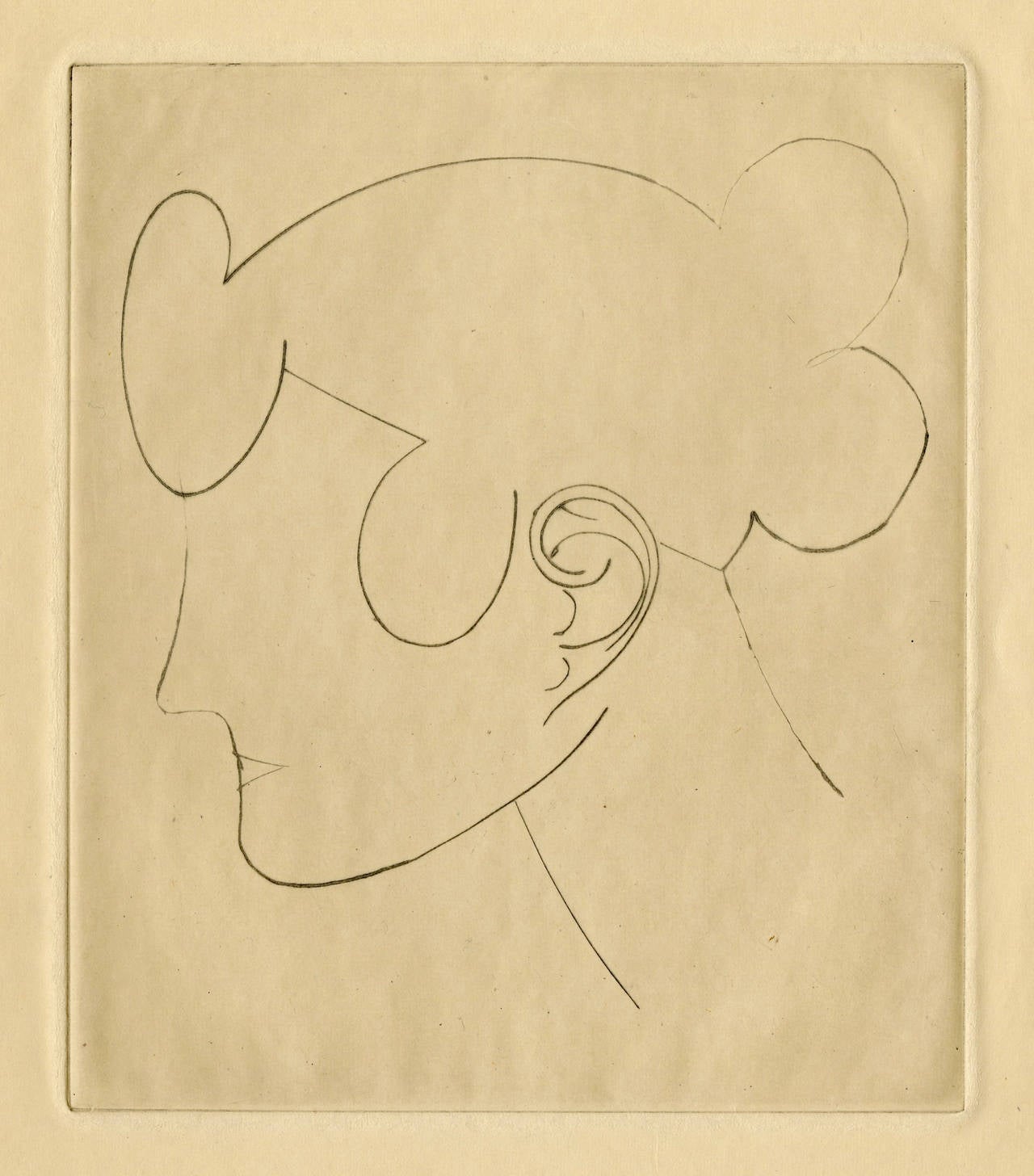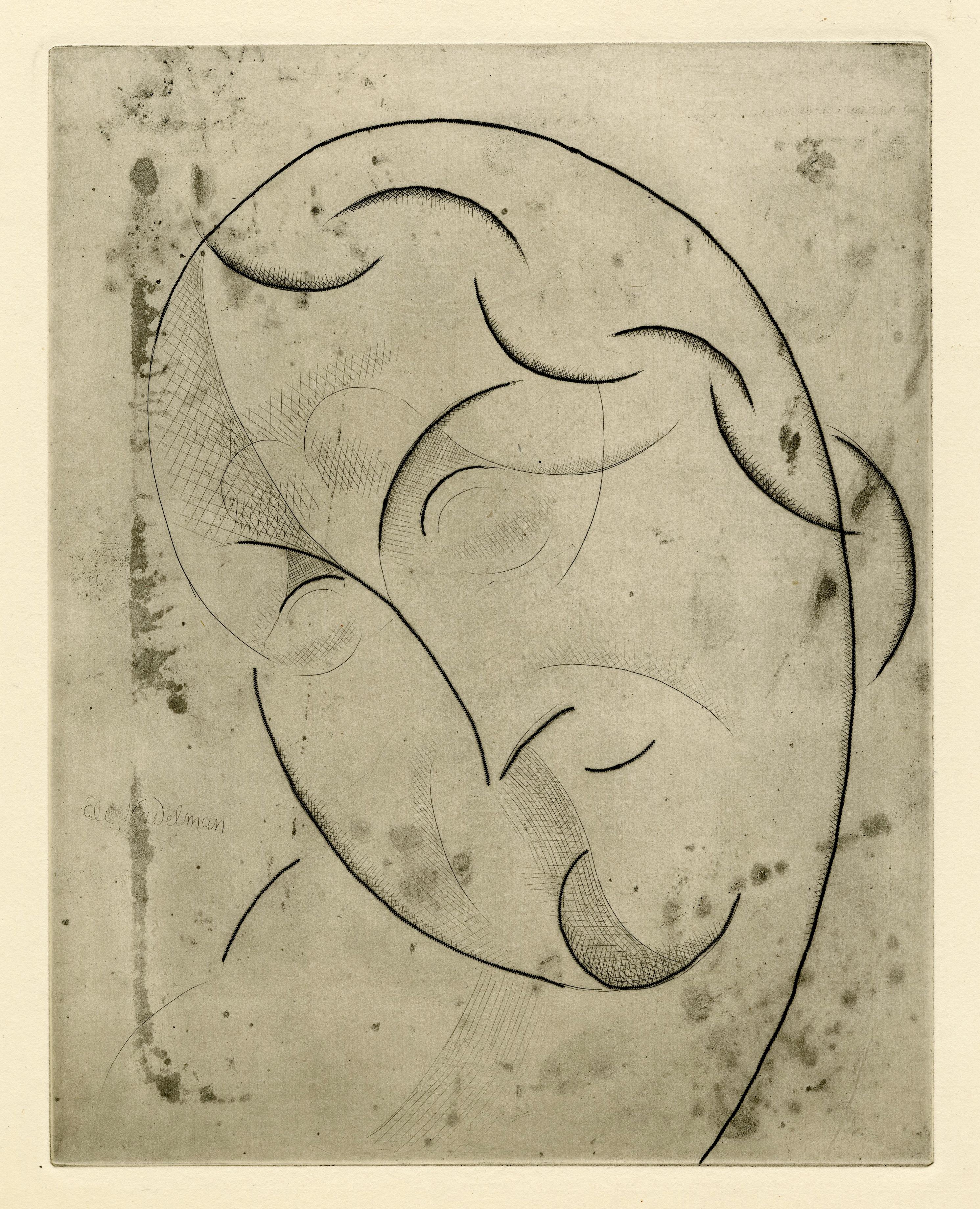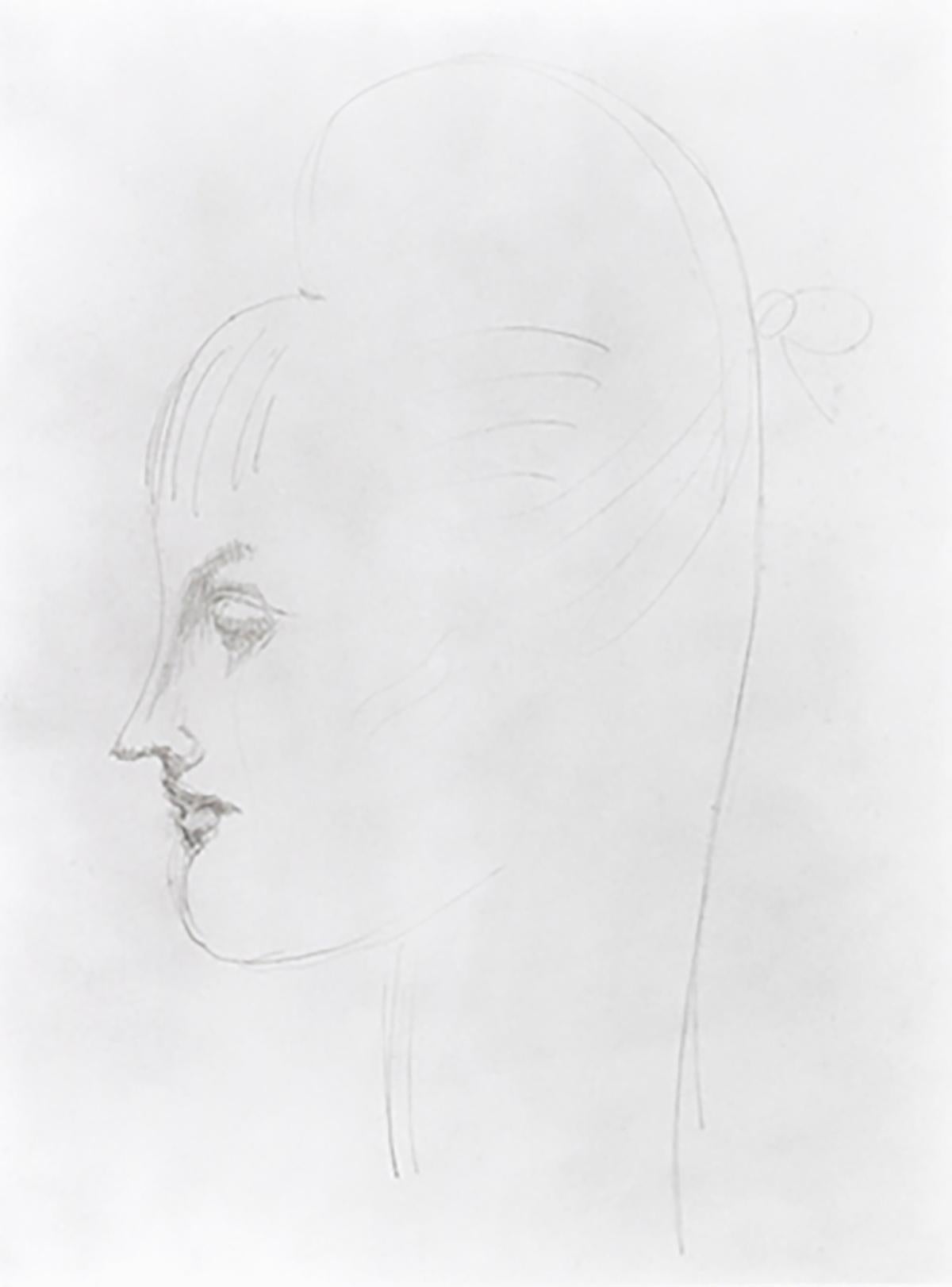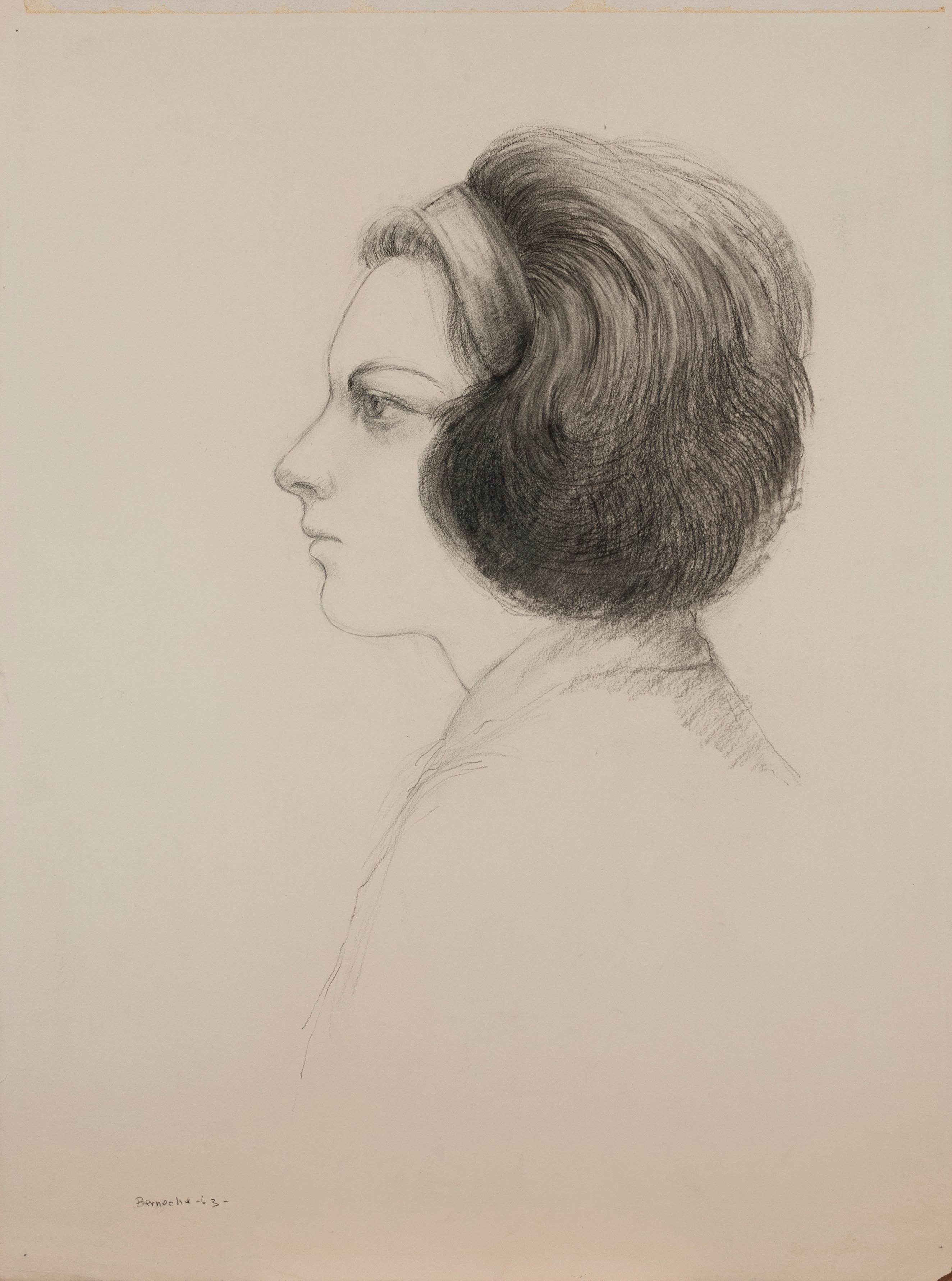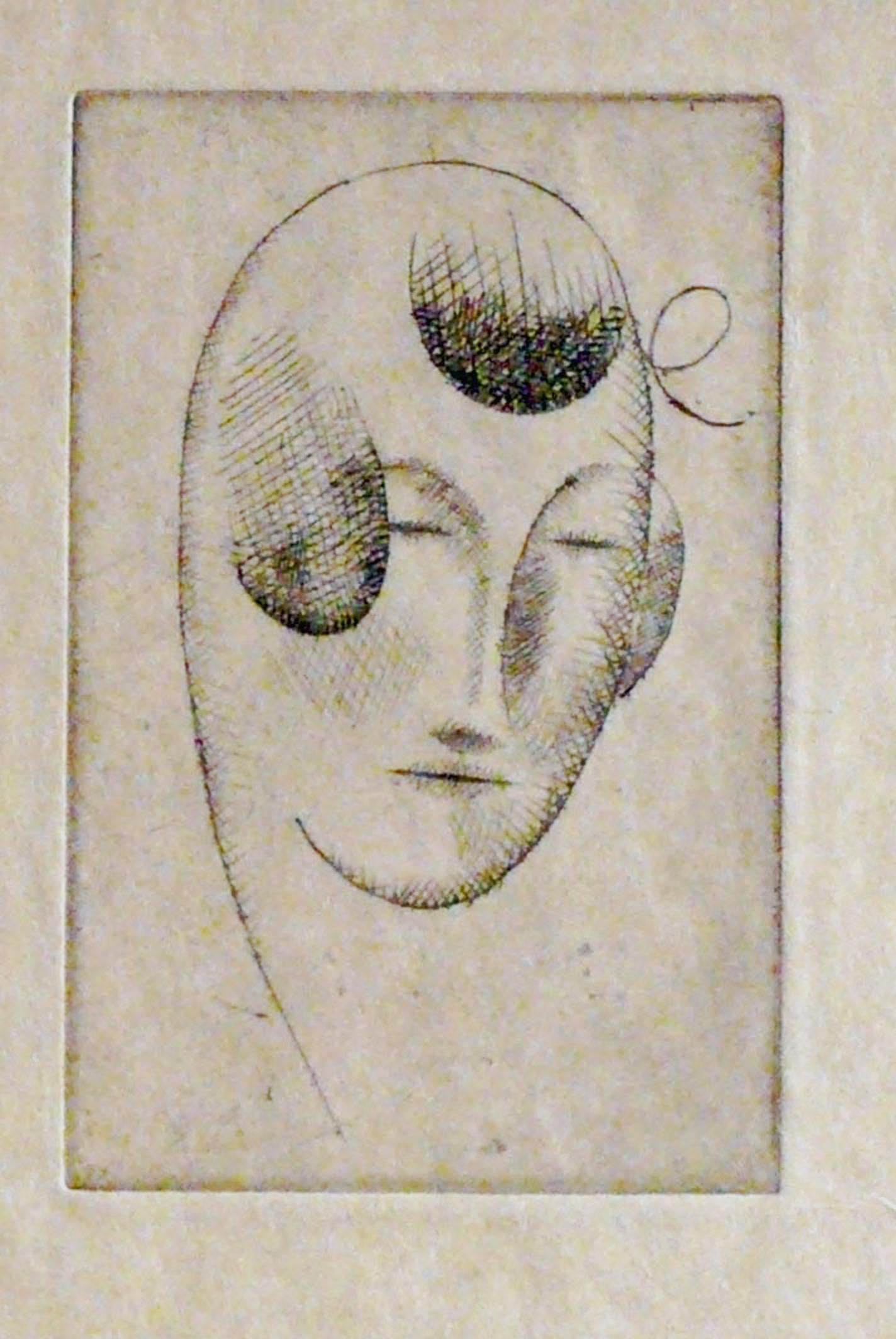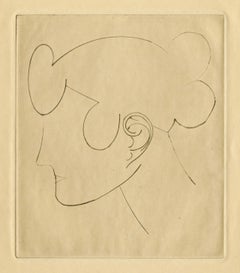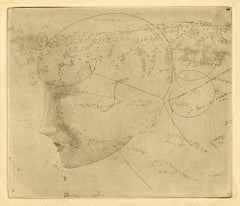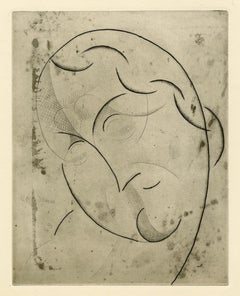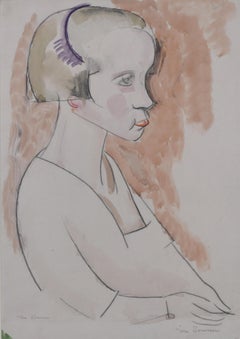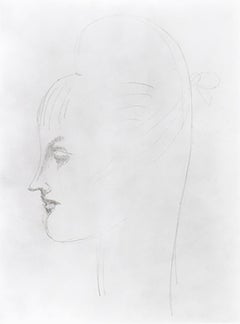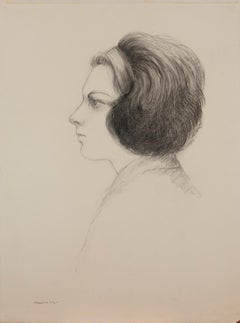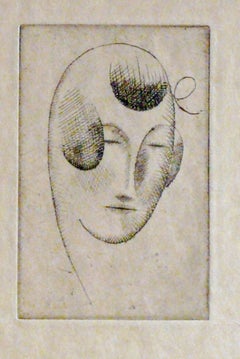Items Similar to Profile Bust of a Girl - Woman's Head in Profile (Havard)
Want more images or videos?
Request additional images or videos from the seller
1 of 6
Elie NadelmanProfile Bust of a Girl - Woman's Head in Profile (Havard)1920
1920
$2,000
£1,510.32
€1,729.18
CA$2,824.52
A$3,083.70
CHF 1,616.66
MX$37,452.76
NOK 20,189.44
SEK 19,064.22
DKK 12,906.47
About the Item
Profile Bust of a Girl - Woman's Head in Profile (Havard)
Drypoint, 1920
Unsigned (as issued)
From: The Drypoints of Elie Nadelman, 21 unpublished prints by the sculptor, proof from the original zinc and copper plates, 1952
Published by Curt Valentin, New York
Edition: unknown
Printed by Charles S. White, mast printer
Printed on a simili japan paper
A complete portfolio is in the collection of Harvard Art Museums
Only a very few impressions of llifetime impressions by Nadelman are known. Even these posthumous impressions from 1952 are rare today.
Reference: Kirstein 15, published state
Condition: Very minor printer's creases
Plate/Image size: 4 5/8 x 3 3/16 inches
Elie Nadelman
Born 1882, Warsaw, Poland
Died 1946, Bronx, New York
Born in occupied Poland, Elie Nadelman began his artistic training in Warsaw before leaving in 1902 to visit Munich, where he developed a passion for early Greek art. In 1905, soon after joining the Polish colony in Paris, he made his debut at the Salon d’Automne. When World War I broke out, Nadelman emigrated to New York with the help of his patron, Helena Rubinstein, and began to introduce genre subjects, such as popular dance, into his repertoire. He married Viola Spiess Flannery in 1919, and together they built the country’s largest collection of folk art, part of which was later documented by the Index of American Design. Consisting of more than 50,000 artifacts, the collection was unique in the US at the time for its inclusion of European objects. In 1926 their Museum of Folk and Peasant Arts opened in Riverdale in the Bronx. After the museum closed in 1937 due to lack of funds, Nadelman stopped exhibiting publicly, although he remained dedicated to his art. He committed suicide in 1946.
Despite his affinity for vernacular subjects, Nadelman was mainly celebrated for the stylized, streamlined grace of his Greek-inspired works. While his classical sculptures garnered an enthusiastic uptown collector base, the plaster genre figures he exhibited downtown beginning in 1917, followed soon by cherrywood and bronze versions, attracted only controversy. Nadelman’s disregard for the boundaries between high and low was also expressed in the organization of his folk art collection, which highlighted formal correspondences across time and space. His passion for folk art later inspired his largely unrealized ambition to produce works for a popular audience. To this end, in the late 1920s he replicated the look of bronze sculpture with more affordable galvano-plastique and made ceramic multiples with individualized touches and inventive patinas.
Dancer (1918) was the only one of Nadelman’s cherrywood vernacular figures to sell during his lifetime. Arranged in a pose reminiscent of Georges Seurat’s Le Chahut (1889–1890), its smooth and simplified wood surfaces are economically defined with a few touches of color. The fleshiness of Nadelman’s glazed ceramic and painted papier-mâché figures of the 1930s represents an increasing transgression of the values that defined his early classical sculptures, then taken further in the palm-sized plaster sculptures he produced beginning in 1938."
Courtesy National Gallery of Art, Washington
- Creator:Elie Nadelman (1885-1946, Polish)
- Creation Year:1920
- Dimensions:Height: 4.63 in (11.77 cm)Width: 3.19 in (8.11 cm)
- Medium:
- Movement & Style:
- Period:
- Condition:
- Gallery Location:Fairlawn, OH
- Reference Number:Seller: FA94131stDibs: LU14015162412
About the Seller
5.0
Recognized Seller
These prestigious sellers are industry leaders and represent the highest echelon for item quality and design.
Platinum Seller
Premium sellers with a 4.7+ rating and 24-hour response times
Established in 1978
1stDibs seller since 2013
814 sales on 1stDibs
Typical response time: <1 hour
Associations
International Fine Print Dealers Association
- ShippingRetrieving quote...Shipping from: Fairlawn, OH
- Return Policy
Authenticity Guarantee
In the unlikely event there’s an issue with an item’s authenticity, contact us within 1 year for a full refund. DetailsMoney-Back Guarantee
If your item is not as described, is damaged in transit, or does not arrive, contact us within 7 days for a full refund. Details24-Hour Cancellation
You have a 24-hour grace period in which to reconsider your purchase, with no questions asked.Vetted Professional Sellers
Our world-class sellers must adhere to strict standards for service and quality, maintaining the integrity of our listings.Price-Match Guarantee
If you find that a seller listed the same item for a lower price elsewhere, we’ll match it.Trusted Global Delivery
Our best-in-class carrier network provides specialized shipping options worldwide, including custom delivery.More From This Seller
View AllWoman's Head - Woman's Head in Profile (left) (Havard)
By Elie Nadelman
Located in Fairlawn, OH
Woman's Head - Woman's Head in Profile (left) (Havard)
Drypoint, 1920
Unsigned (as issued)
From: The Drypoints of Elie Nadelman, 21 unpublished prints by the sculptor, proof from th...
Category
1920s American Modern Portrait Prints
Materials
Drypoint
Woman's Head in Profile - Woman's Head in Profile (left) (Havard)
By Elie Nadelman
Located in Fairlawn, OH
Woman's Head in Profile - Woman's Head in Profile (left) (Havard)
Drypooint, 1920
Unsigned (as usual)
From: The Drypoints of Elie Nadelman, 21 unpublished prints by the sculptor, pro...
Category
1920s American Modern Portrait Prints
Materials
Drypoint
Girl's Head - Woman's Head (Harvard)
By Elie Nadelman
Located in Fairlawn, OH
Girl's Head - Woman's Head (Harvard)
Drypoint, 1920
Unsigned (as issued)
From: The Drypoints of Elie Nadelman, 21 unpublished prints by the sculptor, proof from the original zinc an...
Category
1920s American Modern Figurative Prints
Materials
Drypoint
Girl in Profile
By William Sommer
Located in Fairlawn, OH
Girl in Profile
Lithographic crayon and watercolor on thin wove paper, c. 1930
Signed twice in pencil (see photos)
Provenance: Estate of the Artist
Edward Somme...
Category
1930s American Modern Figurative Drawings and Watercolors
Materials
Watercolor
Woman's Head
By Elie Nadelman
Located in Fairlawn, OH
Edition of 50 printed by Charles White in 1951 for the estate
Bibliography:
Lincoln Kirstein, Elie Nademan (New York: The Eakins Press, 1973),, 20
Elie Nadelman
Born 1882, Warsaw...
Category
1920s American Modern Prints and Multiples
Materials
Drypoint
Neoclassical Head in profile
By Byron Browne
Located in Fairlawn, OH
Neoclassical Head in profile
Watercolor and graphite on paper, 1950
Signed and dated lower left in ink (see photo)
Provenance: Washington, D.C. private collection
Condition: Excellen...
Category
1950s Modern Figurative Paintings
Materials
Watercolor
You May Also Like
Profile of a Woman
By Elie Nadelman
Located in New York, NY
Pencil on paper
Category
Early 20th Century American Modern Drawings and Watercolor Paintings
Materials
Pencil
Value Study of Woman's Head in Profile
Located in Columbia, MO
Jerry Berneche (1932 - 2016) was a painter and draftsman of representational scenes and portraits featuring extraordinary color work and extremely detailed mark-making. Locally he is...
Category
20th Century American Realist Figurative Drawings and Watercolors
Materials
Charcoal, Graphite
WOMAN'S HEAD (WOMAN'S HEAD WITH RIBBON).
By Elie Nadelman
Located in Portland, ME
Nadelman, Elie (Born Poland, 1882, Died in New York, 1946). WOMAN'S HEAD (WOMAN'S HEAD WITH RIBBON). Drypoint, 1920. 4 1/4 x 2 3/4 inches, 106 x 69 mm., plus margins. Unsigned, as us...
Category
1920s Portrait Prints
Materials
Drypoint
Portrait of a Woman in Profile, 1951 - Original Mourlot lithograph
By Françoise Gilot
Located in Paris, IDF
Françoise GILOT (1921)
Portrait of a Woman in Profile, 1951
Original lithograph
On Marais vellum 28 x 22.5 cm (c. 11 x 9 inches)
REFERENCES : Catalog raisonne "Stone Echoes, Origin...
Category
Late 20th Century Modern Portrait Prints
Materials
Lithograph
The Profile of Woman - Original Drawing by Micheline Resco - Mid 20th Century
Located in Roma, IT
The Profile of Woman is an Original Drawing in pencil on creamy-colored paper realized by Micheline Resco in the mid-20th century.
Good conditions.
...
Category
Mid-20th Century Modern Figurative Drawings and Watercolors
Materials
Pencil
Female Face - Drawing by Henri Epstein - Early 20th Century
Located in Roma, IT
Female Face is an Pencil Drawing realized by Henri Epstein (1892-1944).
Good condition on a yellowed paper, included a white cardboard (50x35 cm).
Hand-signed by the artist on the lower right corner.
Henri Epstein born in Lódz ( Russian Empire ) on January 14 , 1891 where theJune 20 , 18922 , 3 and died in deportation to Auschwitz ( Third Reich...
Category
Early 20th Century Modern Figurative Drawings and Watercolors
Materials
Paper, Pencil
More Ways To Browse
Antique Bust Of Woman
Girl Bust
Antique Viola
Bust Of A Head
Antique Plaster Figures
Kaws Untitled
Keith Haring Best Buddies
Keith Haring David Bowie
Keith Haring Future Primeval
Kin Choi Lam
Kunisada Triptych
La Petite Corrida
Leon Boullet
Leroy Neiman Posters
Lithograph By Mirror
Lithograph Picasso 1957
Make Art Not War
Marc Chagall Poster Framed
